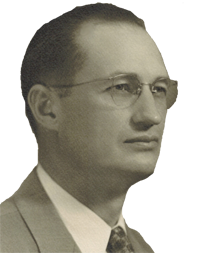 |
The Ganders Family History
Stanton Ganders
1912-1990
Military Service
Farmer / B-24
Bomber Crew Chief / State Senator /
Congressional Candidate / USDA
Administrator /
Agricultural Lobbyist

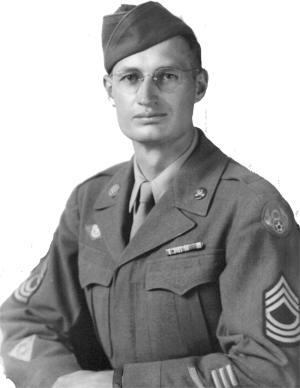 |
|
Military Service
Updated March 8, 2021
Stanton Ganders ... was working on the family wheat
farm in Bickleton
when the Japanese bombed Pearl
Harbor on Dec. 7, 1941 The day after the attack,
the 28-year-old
volunteered in Seattle for the U.S. Army Air Corps
... By Dec. 16, 1941 - nine days after the attack -
he was officially enlisted. From April 15, 1944 to June
15, 1945, he spent 14 months in England as ground
crew chief to Consolidated B-24 Liberator bombers supporting
campaigns against the Nazis at Normandy, Northern
France, Ardennes, Rhineland, Central Europe and Air
Offensive Europe in World War II.
|

Photo courtesy Steve
Ganders |
 |
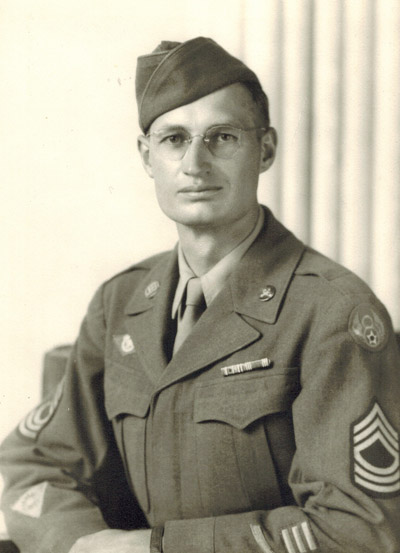 |
 |
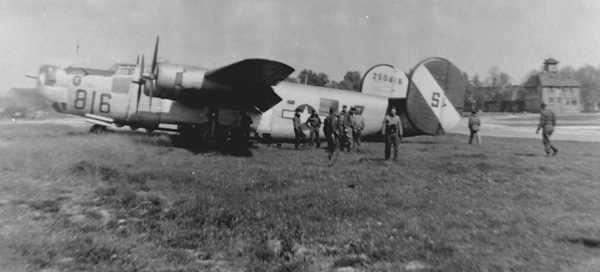 |

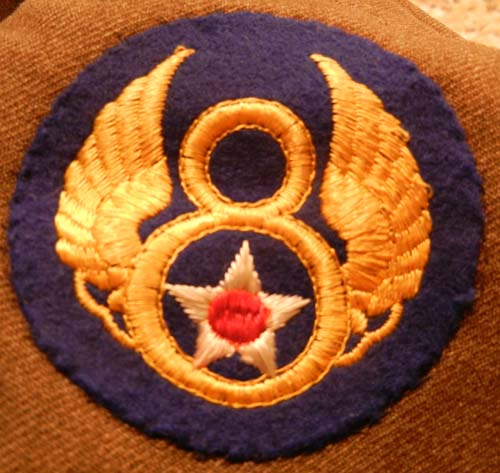 |
| Photos (above) of
two different B-24 Liberator Bombers, were
believed to be maintained by their Army Air
Corps crew chief, M/Sgt. Stanton Ganders in
England to ensure their combat capability
and readiness for each mission. Top plane
photo provided by the Eastern Klickitat
Historical Society. Bottom photo
provided by Andy Wilkinson.
Visit
Andy's Website at
http://www.the467tharchive.org/frame.html
Right, Stanton Ganders with two ground crew
members. Right of Stanton is believed to be
George William Cromer. Photo provided by
Linda Johnson. |
While Stanton Ganders
eyesight prevented him from becoming a pilot, he
received six battle stars as a ground-based
airplane maintenance crew chief supporting B-24
aircraft for heavy bombing missions for the 8th
Air Force, 2nd Air Division.
He spent 14 months abroad supporting air
bombardment campaigns at Normandy, Northern
France, Ardennes, Rhineland, Central Europe
and Air Offensive Europe - April 15, 1944 to
June 15, 1945.
"Hard Luck Group"
Historian Peter Horne of
Portland, Ore., said Ganders was initially assigned to the 492nd
Bombartment Group, later known as the "Hard Luck
Group" because it was the only group to be
disbanded because of high casualties. The
Hard Luck Group was based at North
Pickenham, England. When it was disbanded,
Ganders and perhaps at least one of
the B-24 bombers he supported was reassigned to the 467th Bombartment Group
(Heavy, 2nd Org), 788th Bomb Squadron, Rackheath
Air Field, England.
"Rackheath Aggies"
He probably led a five-person ground crew
that serviced three or four bombers based at
Rackheath which was four miles east of
Norwich. There
were probably more than 65 Liberator bombers
at Rackheath making up the 467th Bombardment
Group during this period and perhaps 20
bombers in his squadron. The bomber flight
crews, plus ground crews, engineers, etc.
made Rackheath a churning center of up to
3,000 personnel at any one time, according
to Historian Andy Wilkenson.
The nickname of the 467th was the "Rackheath
Aggies," a title that a Bickleton wheat farmer
no-doubt embraced. Flight teams would run
dangerous missions for three to ten months
but ground crews like Ganders were generally
based there for the duration of the war.
"Pregnant
Angel" and "Three Star Special"
The top photo of the airplane above, marked
986, sometimes carrying the name "Pregnant
Angel" and later "III*Special"
(Three-star Special) was among B-24s that Ganders serviced.
It appears likely Stanton worked on this
plane as crew chief for both the 492nd and
467th Bombartment groups.
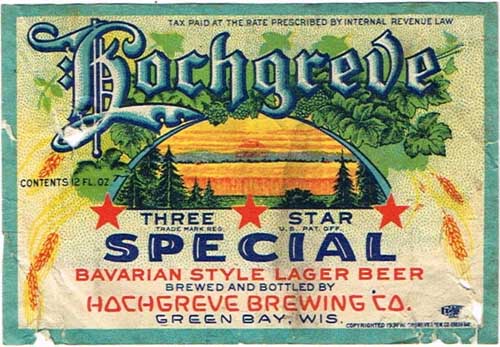 |
The crews
of the top plane flew 78 missions in
World War II for the 467th and the
high-loss 492nd Bombardment Groups.
We haven't found anyone that can
precisely detail the origin of III*
Special. Horne suggests that it may
have been named after a Wisconsin
Beer, Hochgreve Three Star Special
Bavarian Style Lager. |
The bottom photo
of the plane with a natural metal finish marked "816" was generously
provided in 2016 by Andy Wilkinson of
Sidmouth, Devon, England.
His research confirmed the 816 plane was the
aircraft that flew Stanton Ganders home from
the war to the United States on June 11, 1945
and was assigned to the 788th Squadron. Crew
chiefs frequently flew as passengers home on
the plane they had maintained.
Andy maintains a web page, photo library and
newsletter on the history of the 467th
Bomber Group.
Rise to Master Sergeant
A local
Klickitat County newspaper report (Goldendale Sentinel,
correspondence
probably supplied by his family) stated he was
promoted from tech sergeant to staff sergeant to
master sergeant
during a two-week period in May,
1945.
Gunfire on the tarmac
Even though he was ground-based, he would later recall close calls
with enemy machine gunfire. Horne said the bases that
Ganders was assigned sometimes encountered attacks.
"There was a rather
'famous' incident on 22 Apr 44
when German night fighters followed the bombers home
from a mission that returned during the early
evening hours. In brief, no one saw them and they
got in the middle of the bombers while they were
landing. Created quite a bit of chaos and a number
casualties..." Horne said. Horne is building a research site
on the 467th Bomber Group
at
http://www.467bg-research.com/index.php
Return to the United States
Stanton Ganders returned to the U.S. and Bradley Field,
Windsor Locks, Connecticut on June 11,
1945, on a B-24 Laborador Bomber* "42-50816" (no
name), likely one of
the planes he had served. Later that summer,
Ganders was back on the Bickleton farm for 30
days of rest and relaxation.
Never
Assigned to the South Pacific
He told
family he expected to be reassigned to the South
Pacific and the war on Japan. Atomic bombs
dropped on Hiroshima and Nagasaki ended World
War II and he was discharged at Fort Bliss, Texas,
(235th Army Air Force Base Unit) on Oct. 9,
1945.
He would return from Texas to his Central
Washington farm, just southwest of the
Hanford Nuclear Reservation where a portion
of the effort to produce the war-ending
atomic bomb had been underway in his
absence.
|
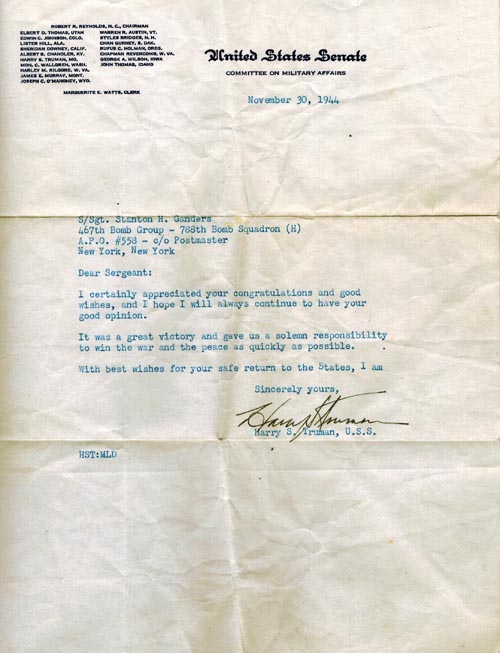
Letter from
then-U.S. Sen. Harry S. Truman, Committee on
Military Affairs, to Sgt. Stanton Ganders on
Nov. 30, 1944

Orders that sent Stanton Ganders back to the
United States
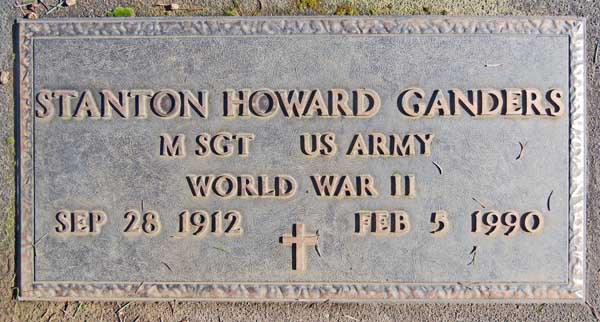
Stanton Ganders
is buried near the state capitol in Olympia,
WA at the Masonic Memorial Cemetery
(Tumwater, WA). At his request, the
grave is marked by a US Army veteran World
War II headstone.
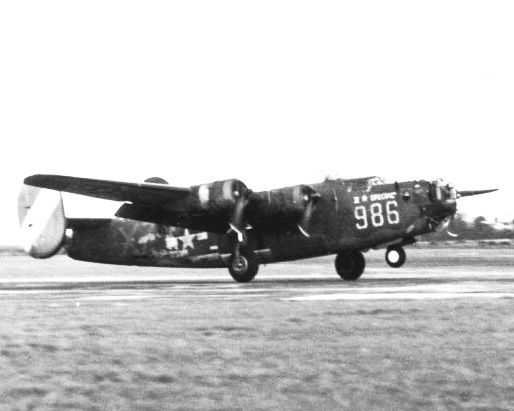
B24 986,
"III*Special" (Three-star Special,
formerly nicknamed Pregnant Angel.)
Photo Courtesy of Andy Wilkinson
and the
467th Bombardment Group Association Archive
|
Left, the III*
Special on a bombing run. (467th
Bombardment Group Research Site.)
Right, another photo that is likely the III* Special
(42-949-86),
B24H-FO-20, Perhaps in her usual
parking place, Hardstand # 10 at
Rackheath
Posted by Christine Herb White on
May 1, 2017 from the Joe Haenn
Collection.
|
A very
special thank you to Peter Horne, Andy
Wilkinson and Chris Collins, World War II
researchers that
specialize in the great history of the 467th
and 492nd Bombardment Groups and graciously
and enthusiastically volunteered assistance.
* Fly home date for Stanton's Liberator bomber
determined from Peter Watts' book, "The
467th Bomber Group in World War II," a
Schiffer Military History Book, 2005. Watts
was the official Army historian at
Rackheath.
Some excerpts from the
Eastern Klickitat County Historical Society
Newsletter, Winter 2013, with references to an
article in the July 19, 1945, Goldendale Sentinel
and family records including his discharge papers. Military
portrait by The Hodge Studio, Topeka, Kansas
|
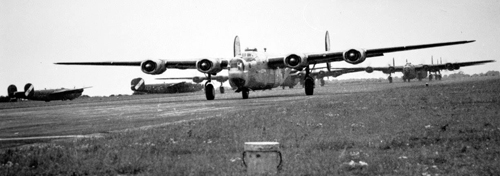
The 467th
Bombardment Group at Take-off, Miles E.
Coolidge Memorial Collection |
|
Ganders.Com is maintained by Larry Ganders
This page updated March 8, 2021

|
|